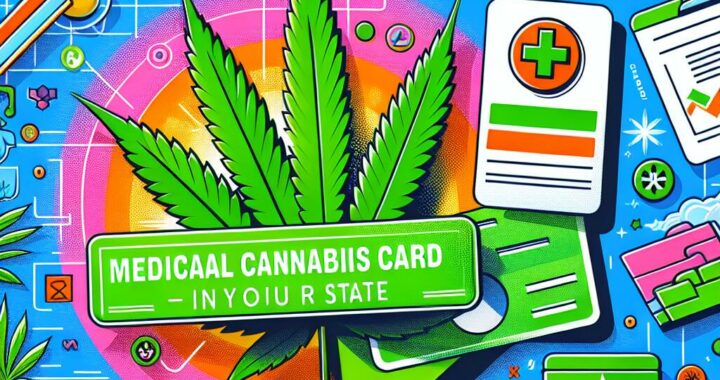Cannabis Legalization Trends Across the United States
10 min read
The surge toward cannabis reform has become a tangled tapestry interwoven with the threads of social justice. Advocates are raising their voices, shining a spotlight on how cannabis prohibition has disproportionately battered marginalized communities, underscoring an urgent call for policies that do more than just legalize cannabis—they must also confront and rectify historical injustices. The push to wipe clean past cannabis-related convictions is seen as an essential stride in mending the wounds inflicted on those who suffered legal repercussions for actions that society no longer deems criminal.
As states grapple with the intricate maze of legalization, embedding social equity measures emerges as absolutely crucial. Numerous jurisdictions have rolled out programs designed to deliver resources, training, and financial aid to individuals hailing from communities that endured brutal enforcement of draconian cannabis laws. These initiatives strive to cultivate a vibrant and inclusive market—one where equity flourishes for those who once bore the brunt of systemic disadvantage. Moreover, the ongoing conversation around cannabis reform is anything but static; it evolves dynamically, pressing forth a demand for policies that champion fairness while dismantling the socio-economic chasms widened by decades of prohibition’s grip.
Addressing Disparities in Cannabis Arrests
The glaring disparities in cannabis-related arrests persist as a pressing concern, particularly for communities of color. It’s striking—despite comparable rates of cannabis use across various demographic groups, Black and Hispanic individuals find themselves ensnared disproportionately by the long arm of the law for offenses related to marijuana. This unsettling reality underscores an urgent call for reform: not just tweaks to legal structures but a deep dismantling of systemic biases woven into law enforcement practices. Legislators and advocacy organizations stress the critical need for policies that thwart discriminatory arrests while fostering equitable application of cannabis laws.
To tackle these disparities effectively, a multifaceted approach is essential. The expungement of past cannabis convictions stands out as vital—a necessary pathway to relief for those caught in the web of stringent regulations that have unjustly affected their lives. Moreover, bolstering community outreach initiatives can pave the way for greater awareness regarding legal rights and understanding the nuances surrounding cannabis use. Lawmakers are urged to elevate these issues within legislative dialogues, ensuring a fair transition into a legalized cannabis market—one that nurtures an equitable society where every individual enjoys equal rights and protections under the law.
Challenges Faced Post-Legalization
In the wake of legalization, a myriad of challenges has surged forth, testing the very fabric of cannabis frameworks that states painstakingly established. The labyrinthine nature of regulatory compliance looms large as a formidable obstacle. Industries find themselves ensnared in a web of ever-evolving regulations, each jurisdiction boasting its own set of standards and shifting requirements for product testing and labeling—an inconsistency that breeds bewilderment among cultivators, retailers, and consumers alike. And just when one thinks clarity might emerge, local ordinances throw another wrench into the works; municipalities often craft their own rules that diverge sharply from state legislation.
Then there’s the specter of public safety concerns—a persistent thorn in the side for states with legalized cannabis. Law enforcement agencies are thrust into a whirlwind adaptation process, striving to uphold public safety amid this legislative upheaval. Compounding matters are issues like impaired driving incidents and alarming spikes in poisoning cases among children—troubles directly linked to legalization efforts. These dilemmas demand nothing short of an all-encompassing strategy focused on education and enforcement to effectively mitigate risks—a daunting challenge indeed for policymakers and community organizations caught in the delicate dance between ensuring safety and expanding access.
Regulatory Hurdles and Compliance Issues
The shift from prohibition to legalization unfurls a tangled tapestry of regulatory obstacles that states must deftly maneuver. Each jurisdiction spins its own intricate web of rules dictating how cannabis is produced, distributed, and sold, resulting in a patchwork quilt of compliance conundrums. Businesses often find themselves wrestling with an array of local regulations—each one different—making it all the more challenging to achieve clarity and consistency. On top of this, rigorous marketing and labeling regulations only serve to further entangle operations, pushing companies to pivot quickly lest they stumble into penalties or legal oversights.
Navigating the labyrinthine maze of both state and federal laws looms large over this landscape; after all, cannabis remains classified as a Schedule I substance under federal law. This dissonance breeds unease for state-licensed enterprises grappling with banking restrictions that stifle growth, tax intricacies that complicate profits, and hurdles in obtaining insurance coverage. To add another twist to this already convoluted tale, local governments may layer on their own set of regulations that can starkly contrast with those at the state level—a veritable minefield! For businesses aiming not just to survive but thrive amid these shifting sands, astute compliance strategies are imperative. This necessitates relentless engagement with legal minds and staying attuned to ever-evolving regulatory shifts—a daunting yet crucial endeavor in today’s dynamic climate.
| State | Key Regulations | Licensing Requirements | Legal Status | Banking Protections |
|---|---|---|---|---|
| California | Track-and-Trace System; Marketing Restrictions | State and Local Licenses Required | Legal for Adult Use | Limited access; some local banks serve |
| Colorado | Seed-to-Sale Tracking; Packaging Rules | Multiple License Types (Cultivation, Retail) | Legal for Adult Use | Some banking options through credit unions |
| New York | Social Equity Program; Marketing Guidelines | Conditional Adult-Use Retail Dispenser License | Legal for Adult Use | Significant banking challenges remain |
| Florida | Medical Use Regulations; Labeling Requirements | Ongoing Licenses; Limited Number of Licenses Issued | Legal for Medical Use | Very limited banking access |
Public Opinion on Cannabis Legalization
Over the last ten years, a remarkable metamorphosis has unfolded in public sentiment toward cannabis legalization. A plethora of surveys reveal that a substantial majority of Americans now champion legal access to cannabis for both medical and recreational purposes. This dramatic shift mirrors an evolving societal mindset about cannabis, propelled by an expanding recognition of its potential benefits alongside the undeniable harms wrought by prohibition. The burgeoning acceptance can largely be traced back to heightened visibility around scientific research, heartfelt personal stories, and the dawning realization of socio-economic boons that legalization might usher in—think increased tax revenue and job generation.
Yet, amid this overarching wave of support lies a patchwork of divisions among different demographic groups. Factors like political affiliation, age brackets, and geographic locales play pivotal roles in shaping varied levels of endorsement. Generally speaking, younger cohorts tend to embrace more favorable views compared to their older counterparts who may still grapple with entrenched stigmas from yesteryears. Moreover, regional disparities become apparent: states boasting established legalization frameworks frequently showcase higher approval ratings while conservative bastions often dig in their heels against reform initiatives. Grasping these multifaceted perspectives is crucial for policymakers as they navigate the shifting terrain of cannabis legislation—a landscape rife with complexity yet bursting with opportunity.
Shifts in Attitudes Over the Years
In the whirlwind of societal evolution over the last few decades, perceptions of cannabis have undergone a remarkable metamorphosis. Once shackled by stigma and tangled in associations with criminality, this humble plant has gradually emerged as a beacon of medicinal promise and economic potential. Polling data paints a vivid picture: public support for legalization is soaring, revealing an undercurrent of cultural acceptance that boldly dismantles old misconceptions.
This shifting narrative finds its most fervent advocates among younger generations, who often embrace cannabis use with open arms—far more so than their older counterparts. The discourse around cannabis has expanded to encompass not just personal choice but also critical themes like social justice, health benefits galore, and tantalizing prospects for state revenue streams. In this dynamic landscape, legalization movements sweeping across various states act as catalysts for change—a re-examination of cannabis that’s reverberating through both social realms and political corridors alike.
- Increased awareness of the medicinal benefits of cannabis, such as pain relief and appetite stimulation.
- Growing recognition of the importance of social justice in addressing past cannabis-related criminal charges.
- A shift towards viewing cannabis as an economic asset rather than a liability for states.
- Rising grassroots advocacy and community support for cannabis legalization.
- Enhanced research opportunities leading to better understanding and innovation in cannabis products.
- Shifting perceptions among medical professionals regarding cannabis as a legitimate treatment option.
- Increased representation of diverse voices in the cannabis industry, promoting inclusivity and equity.
Impact on Youth and Educational Programs
The legalization of cannabis sparks a whirlwind of critical concerns, particularly regarding its effects on youth and educational initiatives. A flurry of researchers has turned their attention to the intricate ways access to cannabis might shape adolescent behavior and academic performance. Key discussion points swirl around factors like the age at which individuals first partake, how often they consume it, and the myriad health risks intertwined with these choices—topics that educators and policymakers are grappling with fervently. As accessibility surges, there’s an urgent call for robust educational programs designed to arm young people with essential knowledge about cannabis: its effects, potential pitfalls, and the ever-evolving legal landscape surrounding its use.
In light of this shifting paradigm, many educational institutions find themselves reevaluating their strategies for substance abuse prevention as cannabis weaves itself into mainstream culture. The need to provide students with accurate information is paramount; it’s about cultivating a culture where responsible usage can flourish. Schools are embarking on comprehensive curriculum overhauls that don’t just skim the surface but dive deep into not only cannabis but also the broader tapestry of substance use. This proactive approach seeks to empower students—not merely by informing them but by equipping them with tools to navigate decisions wisely while addressing and mitigating possible health risks associated with consuming cannabis.
Monitoring Cannabis Use Among Minors
As states wade through the intricate maze of cannabis legalization, keeping a keen eye on its repercussions for youth becomes ever more critical. The shifting legal landscape has sparked heightened worries about possible upticks in cannabis use among minors. Yet, research suggests that simply legalizing doesn’t equate to an automatic spike in consumption rates within this group. Still, ongoing scrutiny is vital to unravel the complexities of usage trends and gauge how effective educational initiatives aimed at prevention truly are.
In this context, educational programs directed at young people emerge as a linchpin in tackling the potential hazards tied to cannabis use. School-based initiatives prioritize raising awareness and championing healthy choices—strategies designed to curb curiosity and limit experimentation. By forging partnerships among schools, parents, and community organizations, we can cultivate an atmosphere where candid conversations about cannabis thrive. This multifaceted strategy aims not just to enlighten students about the perils of misuse but also to arm them with tools that foster informed decision-making amidst their swirling curiosities and societal pressures.
Future Projections for Cannabis Legalization
The wave of cannabis legalization is surging, rippling through states that once clung tightly to their anti-reform stances. It’s a curious spectacle—legislative efforts are gaining unexpected ground, transforming the landscape in ways many thought impossible just a few years ago. Advocacy groups and public interest campaigns have become the heartbeat of this movement, stirring conversations everywhere and reshaping narratives around cannabis like clay in skilled hands.
Polls reveal something striking: support for legalization is soaring to unprecedented heights, suggesting that society’s views on cannabis use—and its myriad potential benefits—are evolving at breakneck speed. What does the future hold? It seems likely that more states will tiptoe toward legality, especially those grappling with enticing economic prospects or urgent social justice dilemmas.
Look to Colorado and California—they’re not just pioneers but blueprints for what can be achieved when markets bloom under legal frameworks. As these models rise from the ashes of prohibitionist policies, discussions about regulatory systems and public health implications are bound to take center stage like actors vying for attention in a bustling theater.
Yet amid all this upheaval, one thing remains clear: continuous advocacy and robust public engagement will be paramount as we navigate this uncharted territory. The path forward for cannabis policy is anything but certain; it’s a dynamic journey fraught with complexities where every voice counts in shaping what’s next.
Potential States for Future Legalization Efforts
A tapestry of states is unfolding, each weaving its own narrative in the quest for cannabis legalization, spurred on by a seismic shift in public sentiment and heated legislative debates. Picture Florida and Texas—two behemoths with sprawling populations—stepping into the spotlight as they flirt with more permissive cannabis policies. In Florida, local municipalities are rising up like phoenixes, championing reform that echoes a growing acceptance among their constituents. Meanwhile, across the vast expanse of Texas, lawmakers are dipping their toes into the waters of medical cannabis expansion—a potential precursor to sweeping legalization down the line.
But let’s not overlook the quieter players: smaller states such as Delaware and New Hampshire are also stirring the pot with their own reform initiatives. Here, advocacy groups are passionately rallying citizens and legislators alike to explore the economic windfalls and social benefits that come hand-in-hand with legalization. With an electric mix of grassroots fervor igniting change alongside evolving political backdrops, these regions stand poised for significant strides in cannabis policy—a reflection of an overarching national tide favoring legalization that cannot be ignored.
Conclusion
The movement toward cannabis legalization unfolds like a tangled web, woven with threads of social dynamics, legal shifts, and economic currents. As states venture into bolder policies, the chatter around what these transformations mean for different communities—especially in terms of social justice and youth involvement—grows ever more vibrant. Peering into the results from states that have already crossed this threshold reveals a treasure trove of insights that could guide future reform across the country.
Gazing forward, one can’t help but wonder how the landscape of cannabis regulation might morph as more states weigh their options on legalization. The ongoing dialogues about fair access and responsible consumption are bound to influence how these initiatives take shape. It’s crucial for stakeholders from every corner to stay plugged into this evolving conversation; only then can we hope for an approach that balances public health concerns with safety while nurturing community welfare amidst all this change.





 Protected by Patchstack
Protected by Patchstack